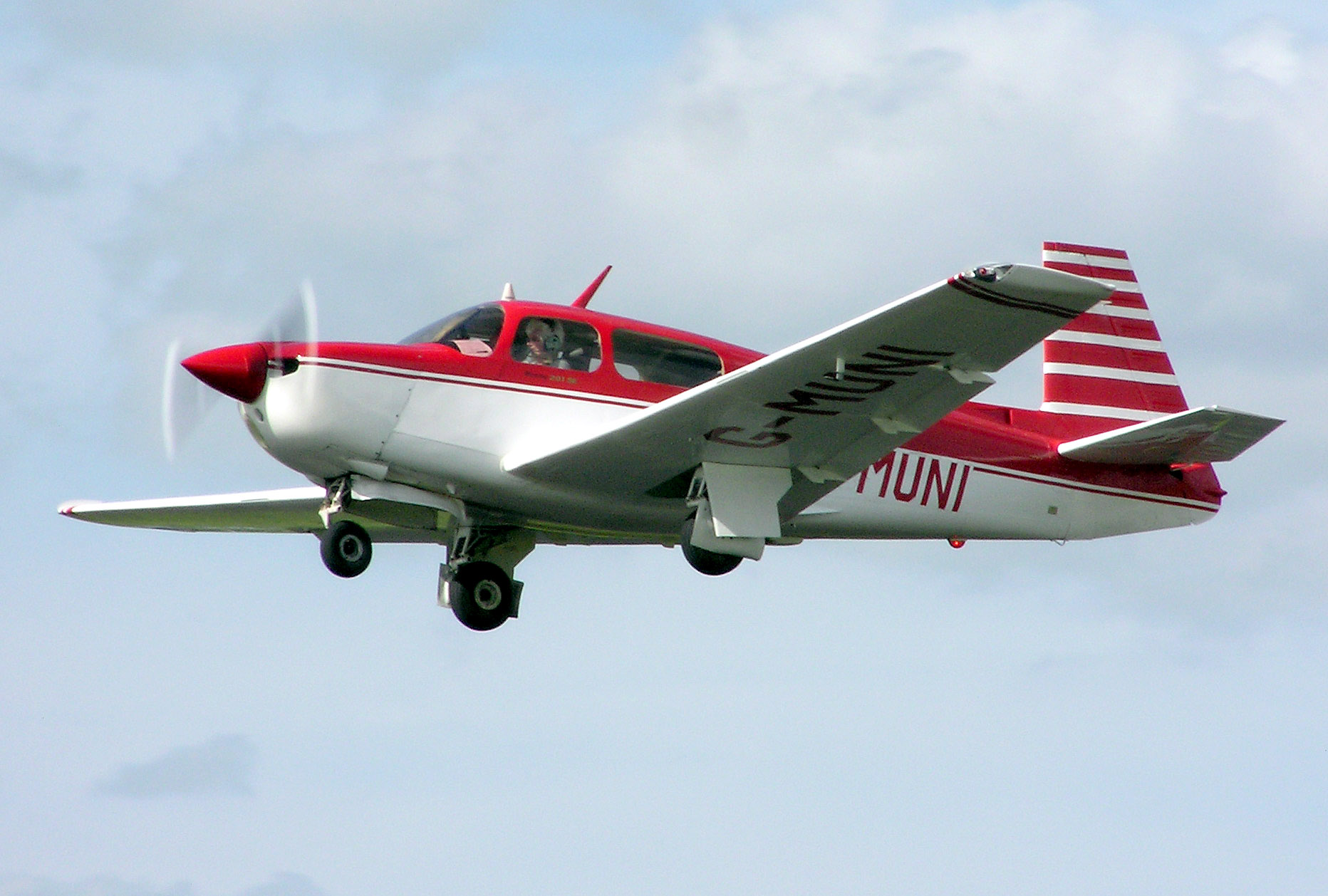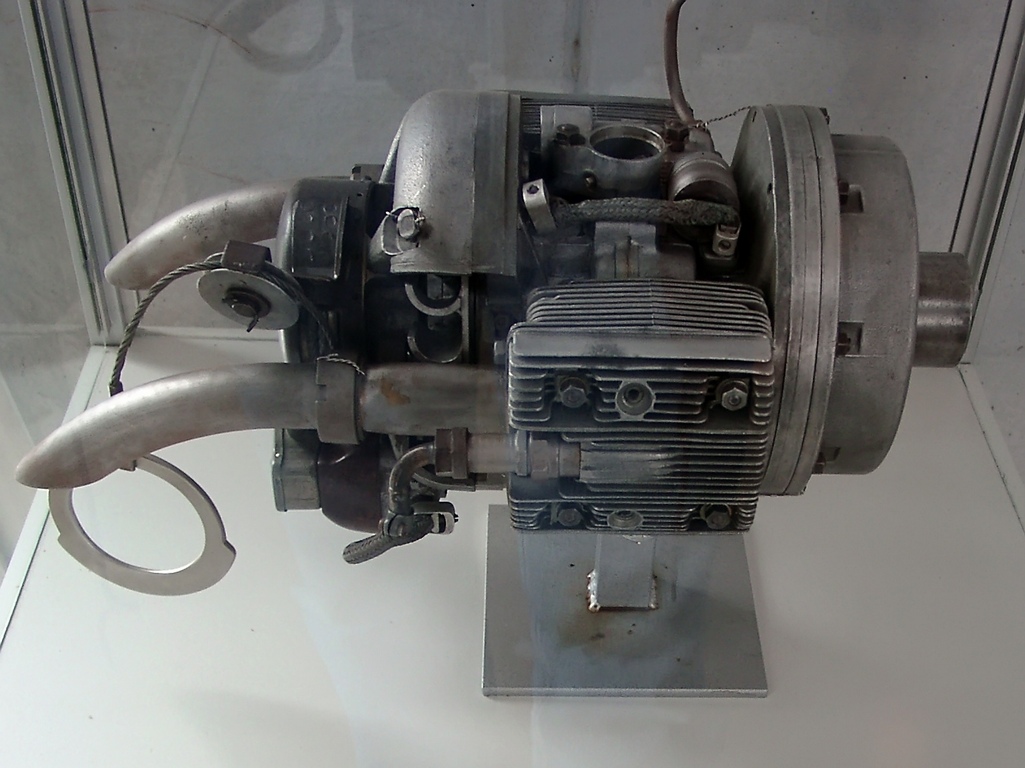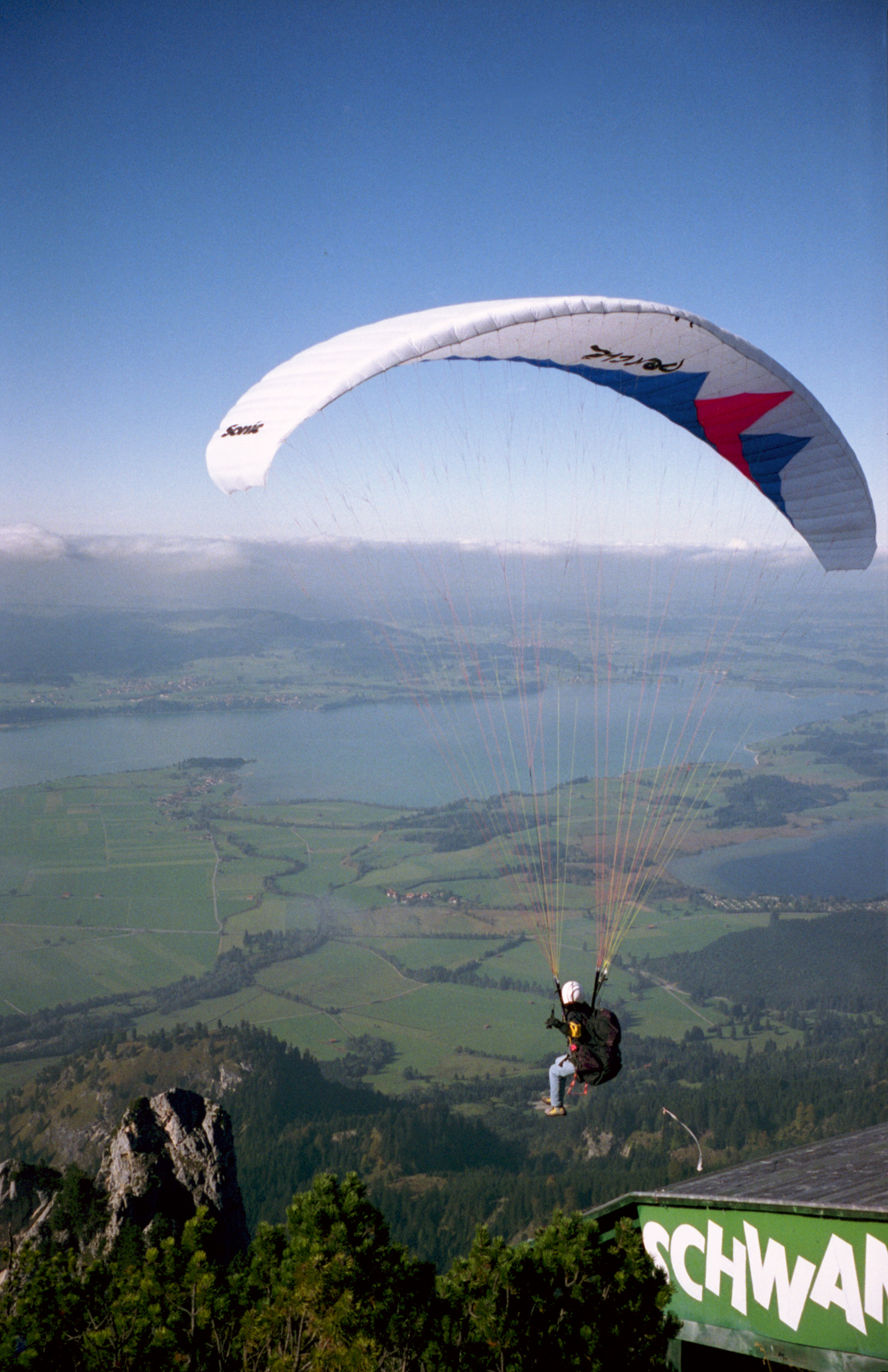|
Sukhoi Su-9 (1946)
The Sukhoi Su-9 (; USAF/DoD designation: Type 8) was an early jet fighter built in the Soviet Union shortly after World War II. The design began in 1944 and was intended to use Soviet-designed turbojet engines. The design was heavily influenced by captured German jet fighters and it was subsequently redesigned to use a Soviet copy of a German turbojet. The Su-9 was slower than competing Soviet aircraft and it was cancelled as a result. A modified version with different engines and a revised wing became the Su-11 (''Samolyot KL''), but this did not enter production either. The Su-13 (''Samolyot KT'') was a proposal to re-engine the aircraft with Soviet copies of the Rolls-Royce Derwent turbojet as well as to modify it for night fighting, but neither proposal was accepted. Design and development Su-9 In 1944, the Sukhoi design bureau ( OKB) began designing a twin-engined fighter powered by two Lyulka TR-1 turbojets, known internally as the Samolyet or Izdeliye (item or pro ... [...More Info...] [...Related Items...] OR: [Wikipedia] [Google] [Baidu] |
Sukhoi Su-9
The Sukhoi Su-9 (Air Standardization Coordinating Committee, ASCC reporting name: Fishpot) is a single-engine, all-weather, missile-armed interceptor aircraft developed by the Soviet Union. Development The Su-9 emerged from aerodynamic studies by TsAGI, the Soviet aerodynamic center, during the Korean War, which devised several optimum aerodynamic configurations for jet fighters. The design first flew in 1956 in aviation, 1956 as the T-405 prototype. The Su-9 was developed at the same time as the Sukhoi Su-7, Su-7 "Fitter", and the West first saw both at the Tushino Aviation Day on June 24, 1956, where the Su-9 was dubbed Fitter-B. It entered service in 1959 in aviation, 1959. The total production of the Su-9 was about 1,100 aircraft. It is believed that at least some Su-9s were upgraded to Sukhoi Su-11, Su-11 "Fishpot-C" form. None were exported to any of the Soviet Union, USSR's client states nor to the Warsaw Pact nations. The remaining Su-9s and later Su-11s were retired d ... [...More Info...] [...Related Items...] OR: [Wikipedia] [Google] [Baidu] |
Stressed Skin
In mechanical engineering, stressed skin is a rigid construction in which the skin or covering takes a portion of the structural load, intermediate between monocoque, in which the skin assumes all or most of the load, and a rigid frame, which has a non-loaded covering. Typically, the main frame has a rectangular structure and is Polygon triangulation, triangulated by the covering; a stressed skin structure has localized compression (physical), compression-taking elements (rectangular frame) and distributed tension (physics), tension-taking elements (skin). Description A simple framework box with four discrete members is not inherently rigid as it will distort from being square under relatively light loads; however, adding one or more diagonal element(s) that take either tension or compression makes it rigid, because the box cannot deviate from right angles without also altering the diagonals. Sometimes the diagonal elements are flexible like wires, which are used to provide te ... [...More Info...] [...Related Items...] OR: [Wikipedia] [Google] [Baidu] |
Wing Loading
In aerodynamics, wing loading is the total weight of an aircraft or flying animal divided by the area of its wing. The stalling speed, takeoff speed and landing speed of an aircraft are partly determined by its wing loading. The faster an aircraft flies, the more its lift (force), lift is changed by a change in angle of attack, so a smaller wing is less adversely affected by Wind gust, vertical gusts. Consequently, faster aircraft generally have higher wing loadings than slower aircraft in order to avoid excessive response to vertical gusts. A higher wing loading also decreases maneuverability. The same constraints apply to winged biological organisms. Range of wing loadings Effect on performance Wing loading is a useful measure of the stalling speed of an aircraft. Wings generate lift owing to the motion of air around the wing. Larger wings move more air, so an aircraft with a large wing area relative to its mass (i.e., low wing loading) will have a lower stalling speed. ... [...More Info...] [...Related Items...] OR: [Wikipedia] [Google] [Baidu] |
Tricycle Undercarriage
Tricycle gear is a type of aircraft undercarriage, or ''landing gear'', that is arranged in a tricycle fashion. The tricycle arrangement has one or more nose wheels in a single front undercarriage and two or more main wheels slightly aft of the center of gravity. Tricycle gear aircraft are the easiest for takeoff, landing and taxiing, and consequently the configuration is now the most widely used on aircraft.Crane, Dale: ''Dictionary of Aeronautical Terms, third edition'', page 524. Aviation Supplies & Academics, 1997. Aviation Publishers Co. Limited, ''From the Ground Up'', page 11 (27th revised edition) History Several early aircraft had primitive tricycle gear, notably very early Antoinette planes and the Curtiss Pushers of the pre-World War I Pioneer Era of aviation. Waldo Waterman's 1929 tailless '' Whatsit'' was one of the first to have a steerable nose wheel. In 1956, Cessna introduced sprung-steel tricycle landing gear on the Cessna 172. Their marketing departme ... [...More Info...] [...Related Items...] OR: [Wikipedia] [Google] [Baidu] |
Nacelle
A nacelle ( ) is a streamlined container for aircraft parts such as Aircraft engine, engines, fuel or equipment. When attached entirely outside the airframe, it is sometimes called a pod, in which case it is attached with a Hardpoint#Pylon, pylon or strut and the engine is known as a podded engine. In some cases—for instance in the typical "Farman Aviation Works, Farman" type Pusher configuration, "pusher" aircraft, or the World War II-era P-38 Lightning or SAAB J21—an aircraft cockpit may also be housed in a nacelle, rather than in a conventional fuselage. Etymology Like many aviation terms, the word comes from French language, French, in this case from a word for a small boat. Development file:Arado Ar 234V6 and Ar 234V8 front-view silhouettes.png, The development of the Arado Ar 234, merging the four nacelles into two The Arado Ar 234 was one of the first operational jet aircraft with engines mounted in nacelles. During its development, the four engines had four distin ... [...More Info...] [...Related Items...] OR: [Wikipedia] [Google] [Baidu] |
Junkers Jumo 004
The Junkers Jumo 004 was the world's first production turbojet engine in operational use, and the first successful axial compressor turbojet engine. Some 8,000 units were manufactured by Junkers in Germany late in World War II, powering the Messerschmitt Me 262 fighter and the Arado Ar 234 reconnaissance/bomber, along with prototypes, including the Horten Ho 229. Variants and copies of the engine were produced in Eastern Europe and the USSR for several years following the end of WWII. Design and development The feasibility of jet propulsion had been demonstrated in Germany in early 1937 by Hans von Ohain working with the Heinkel company. Most of the Reich Air Ministry ( RLM) remained uninterested, but Helmut Schelp and Hans Mauch saw the potential of the concept and encouraged Germany's aero engine manufacturers to begin their own programmes of jet engine development. The companies remained skeptical and little new development was carried out. In 1939 Schelp and Mauch visit ... [...More Info...] [...Related Items...] OR: [Wikipedia] [Google] [Baidu] |
Air Brake (aircraft)
In aeronautics, air brakes, or speed brakes, are a type of flight control surface used on an aircraft to increase the drag on the aircraft. When extended into the airstream, air brakes cause an increase in the drag on the aircraft. When not in use, they conform to the local streamlined profile of the aircraft in order to help minimize drag. Air brakes differ from spoilers in that air brakes are designed to increase drag while making little change to lift, whereas spoilers reduce the lift-to-drag ratio and require a higher angle of attack to maintain lift, resulting in a higher stall speed. However, flight spoilers are routinely referred to as "speed brakes" on transport aircraft by pilots and manufacturers, despite significantly reducing lift. History In the early decades of powered flight, air brakes were flaps mounted on the wings. They were manually controlled by a lever in the cockpit, and mechanical linkages to the air brake. Another early type of air brake, ... [...More Info...] [...Related Items...] OR: [Wikipedia] [Google] [Baidu] |
Flap (aircraft)
A flap is a high-lift device used to reduce the stall (flight), stalling speed of an aircraft wing at a given weight. Flaps are usually mounted on the wing trailing edges of a fixed-wing aircraft. Flaps are used to reduce the take-off distance and the landing distance. Flaps also cause an increase in Drag (physics), drag so they are retracted when not needed. The flaps installed on most aircraft are partial-span flaps; spanwise from near the wing root to the inboard end of the ailerons. When partial-span flaps are extended they alter the spanwise lift distribution on the wing by causing the inboard half of the wing to supply an increased proportion of the lift, and the outboard half to supply a reduced proportion of the lift. Reducing the proportion of the lift supplied by the outboard half of the wing is accompanied by a reduction in the angle of attack on the outboard half. This is beneficial because it increases the margin above the Stall (fluid dynamics), stall of the outbo ... [...More Info...] [...Related Items...] OR: [Wikipedia] [Google] [Baidu] |
Dihedral (aircraft)
Dihedral angle is the upward angle from horizontal of the wings or tailplane of a fixed-wing aircraft. "Anhedral angle" is the name given to negative dihedral angle, that is, when there is a ''downward'' angle from horizontal of the wings or tailplane of a fixed-wing aircraft. Dihedral angle has a strong influence on dihedral effect, which is named after it. Dihedral effect is the amount of roll moment produced in proportion to the amount of sideslip. Dihedral effect is a critical factor in the stability of an aircraft about the roll axis (the spiral mode). It is also pertinent to the nature of an aircraft's Dutch roll oscillation and to maneuverability about the roll axis. Longitudinal dihedral is a comparatively obscure term related to the pitch axis of an airplane. It is the angle between the zero-lift axis of the wing and the zero-lift axis of the horizontal tail. Longitudinal dihedral can influence the nature of controllability about the pitch axis and the ... [...More Info...] [...Related Items...] OR: [Wikipedia] [Google] [Baidu] |
Spar (aviation)
In a fixed-wing aircraft, the spar is often the main structural member of the wing, running wingspan, spanwise at right angles (or thereabouts depending on Swept wing, wing sweep) to the fuselage. The spar carries flight Structural load, loads and the weight of the wings while on the ground. Other structural and forming members such as Rib (aircraft), ribs may be attached to the spar or spars, with stressed skin construction also sharing the loads where it is used. There may be more than one spar in a wing or none at all. Where a single spar carries most of the force, it is known as the main spar. Spars are also used in other aircraft airfoil, aerofoil surfaces such as the tailplane and Vertical stabilizer, fin and serve a similar function, although the loads transmitted may be different from those of a wing spar. Spar loads The wing spar provides the majority of the weight support and dynamic load integrity of cantilever monoplanes, often coupled with the strength of the wing D- ... [...More Info...] [...Related Items...] OR: [Wikipedia] [Google] [Baidu] |
Heinkel He 162
Heinkel Flugzeugwerke () was a German aircraft manufacturing company founded by and named after Ernst Heinkel. It is noted for producing bomber aircraft for the Luftwaffe in World War II and for important contributions to high-speed flight, with the pioneering examples of a successful liquid-fueled rocket and a turbojet-powered aircraft in aviation history, with both Heinkel designs' first flights occurring shortly before the outbreak of World War II in Europe. History Following the successful career of Ernst Heinkel as the chief designer for the Hansa-Brandenburg aviation firm in World War I, Heinkel's own firm was established at Warnemünde in 1922, after the restrictions on German aviation imposed by the Treaty of Versailles were relaxed. By 1929, the firm's compressed air-powered catapults were in use on the German Norddeutscher Lloyd ocean-liners and to launch short-range mail planes from the liners' decks. The company's first post-World War I aircraft design su ... [...More Info...] [...Related Items...] OR: [Wikipedia] [Google] [Baidu] |
Ejection Seat
In aircraft, an ejection seat or ejector seat is a system designed to rescue the aircraft pilot, pilot or other aircrew, crew of an aircraft (usually military) in an emergency. In most designs, the seat is propelled out of the aircraft by an explosive charge or rocket motor, carrying the pilot with it. The concept of an ejectable escape crew capsule has also been tried (see B-58 Hustler). Once clear of the aircraft, the ejection seat deploys a parachute. Ejection seats are common on certain types of military aircraft. History A bungee cord, bungee-assisted escape from an aircraft took place in 1910. In 1916, Everard Calthrop, an early inventor of parachutes, patented an ejector seat using compressed air. Compression springs installed under the seat were tested. The modern layout for an ejection seat was first introduced by Romanian inventor Anastase Dragomir in the late 1920s. The design featured a ''parachuted cell'' (a dischargeable chair from an aircraft or other vehicle) ... [...More Info...] [...Related Items...] OR: [Wikipedia] [Google] [Baidu] |







